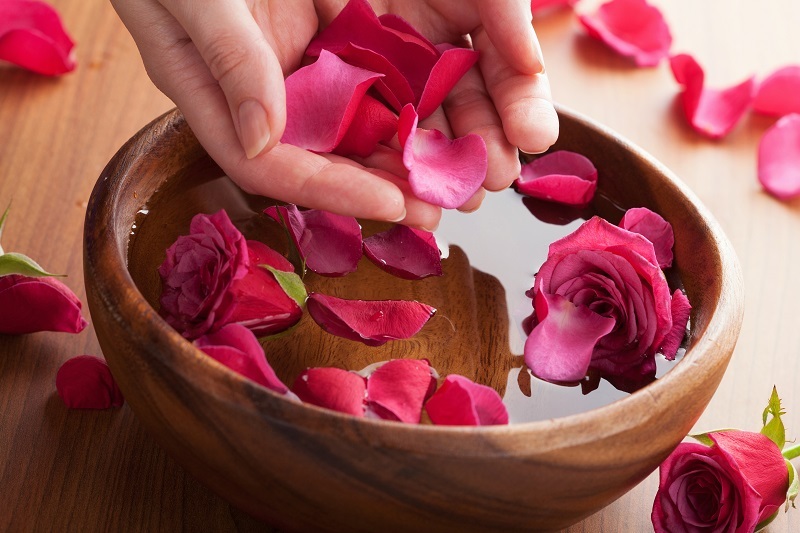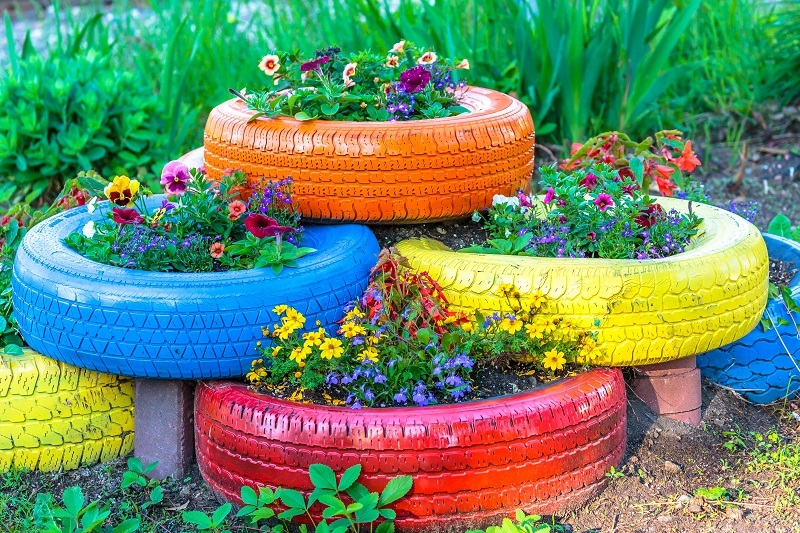Optimize the life of your blooms with three techniques
Posted on 14/08/2025
Optimize the Life of Your Blooms with These Three Proven Techniques
Fresh flowers bring elegance, color, and fragrance to any environment. Whether they're picked from your garden or purchased from a florist, maintaining their vibrancy and longevity is a universal desire. Fortunately, there are several expert-backed methods to help you enjoy your flowers longer. In this article, we explore in depth the top three techniques to optimize the life of your blooms, ensuring your floral arrangements stay stunning for as long as possible.

Why Flower Longevity Matters
Freshly cut flowers have the power to transform a space, boost your mood, and even enhance air quality. However, one common challenge that flower enthusiasts face is keeping these blossoms fresh and lively. Optimizing the life of your blooms not only helps you get the most for your money, but it also reduces waste and maximizes the enjoyment you derive from every bouquet.
Three Expert Techniques to Enhance Bloom Longevity
There's no shortage of folk remedies promising extended flower life, but research and experience point to three main strategies that consistently succeed. Implementing these techniques will help keep your arrangements vibrant, fragrant, and beautiful for days--or even weeks--longer.
- Proper hydration and water management
- Optimal placement and environment
- Regular pruning and maintenance
Technique 1: Mastering Hydration for Lasting Blooms
Water is essential for flower vitality. Immediately after flowers are cut or brought home, their access to nutrients and hydration is limited to what you provide. Optimizing hydration is the single most important step to maximize floral longevity.
Key Hydration Tips to Extend Bloom Life:
- Cut Stems Properly: Always trim the stems at a 45-degree angle using a sharp, clean knife or scissors. This increases the surface area for water absorption and prevents stems from resting flat on the vase bottom, which can block uptake.
- Change Water Frequently: Stagnant water quickly develops bacteria that clog stems and shorten the life of your blooms. Replace the water every 2-3 days, cleaning the vase thoroughly before refilling with fresh, lukewarm water.
- Remove Foliage Below Waterline: Leaves submerged in water can decay, creating bacteria that haste spoilage. Strip any leaves that would fall below the water level.
- Add Flower Food or DIY Alternatives: Commercial floral preservatives provide essential nutrients and antibacterial agents. If unavailable, you can make your own by mixing a teaspoon of sugar, a teaspoon of bleach, and two teaspoons of lemon or lime juice per quart of water.
- Monitor Water Levels: Especially during the first 24 hours, stems absorb significant amounts of water as they rehydrate. Ensure the vase stays full, topping up as needed.
Why Hydration Helps Optimize the Life of Your Cut Blooms
Flowers lose water rapidly after being cut. Consistent, clean hydration ensures they remain plump, prevents wilting, and slows the death of individual blossoms. By following rigorous hydration routines, you directly extend the lifespan of your arrangements.
Technique 2: Choosing the Right Environment for Your Flowers
Not all places in your home are created equal when it comes to flower preservation. Environmental factors like temperature, sunlight, and airflow have a tremendous impact on how long your blooms will last.
Key Environmental Strategies:
- Keep Blooms Cool: Most cut flowers prefer cooler environments (ideally 65-72?F). Heat accelerates evaporation and aging, leading to premature wilting.
- Avoid Direct Sunlight: While many houseplants thrive on sunlight, fresh blossoms quickly lose moisture and fade when exposed directly to intense rays. Place arrangements in bright, indirect light instead.
- Stay Away from Appliances and Fruits: Appliances like TVs, computers, and stoves emit heat that can dry out blooms. Additionally, ripening fruits (such as bananas and apples) release ethylene gas, which accelerates flower senescence. Position flowers away from fruit bowls and electronics.
- Maintain Humidity: Air that is too dry can cause petals and leaves to crisp up. If you live in a dry climate, consider running a humidifier in the room or lightly misting delicate blooms.
- Protect from Drafts: Position your vase away from doors, windows, or vents, as drafts can cause temperature fluctuations and additional water loss.
Flower-Friendly Placement for Bloom Optimization
Consider the natural habitat of your particular flowers. For example, tropical flowers like orchids might benefit from a touch more humidity, while delicate blooms such as tulips last longer when kept cool. Analyze the traits and needs of your specific types of flowers for optimal placement, and you'll further enhance the lifespan of your arrangements.
Technique 3: Pruning and Maintenance--Your Secret Weapon
Regular grooming is crucial to optimize the longevity of your blossoms. Pruning is not just about making your arrangement look tidy; it actively encourages longer vase life by preventing decay from spreading and encouraging healthier water uptake.
Essential Pruning and Maintenance Steps:
- Remove Faded or Wilted Flowers: As soon as a blossom begins to fade, remove it. Decaying flowers release ethylene gas and rot, which can drastically reduce the life of the remaining stems.
- Re-trim Stems Regularly: Every 2-3 days, give each stem a fresh cut to remove clogged or dried-out tissue, which restores their ability to draw up water.
- Eliminate Decaying Leaves: Leaves often decompose before the flowers do. Regularly inspect your arrangement and strip any yellowing or softened foliage.
- Rearrange as Needed: Over time, stems may bend or become crowded. Re-adjust your arrangement to ensure adequate spacing and reduce the risk of mold or rot forming where stems cluster tightly.
- Rinse Vases Thoroughly: Each time you change the water, rinse the vase with warm, soapy water to remove any lingering bacteria or mold.
How Pruning Maximizes the Life of Your Floral Arrangements
Pruning interrupts cycles of decay, prevents the spread of bacteria, and enables your flowers to access vital hydration. When combined with other bloom optimization techniques, regular maintenance represents your best defense against early wilt and sagging petals.
Frequently Overlooked Factors That Impact Flower Longevity
While the three techniques above comprise the pillars of flower care, a few additional considerations can further help maximize the life of your blooms:
- Use the Right Vase: Too small or narrow a vase can constrict stems and limit water access. Select a vessel that offers plenty of space for each stem and holds adequate water volume.
- Work with Clean Tools: Always sanitize your scissors or knife before trimming stems. Dirty tools can introduce harmful bacteria into the vascular system of the flower.
- Opt for Fresher Flowers: Whenever possible, purchase or pick flowers early in the day, when they are most hydrated, and select buds just beginning to open rather than fully mature blooms.
- Know Your Flower Types: Some flowers, like daffodils, secrete sap that can affect neighboring blooms. If mixing varieties, research compatibility or keep certain types separate.
Customizing Techniques for Different Flower Varieties
It's important to note that each flower species may have unique needs for maximal longevity. Here are some custom tips for popular flowers:
- Roses: Remove the outermost petals ("guard petals") and place them in deep water. Re-trim roses daily for best results.
- Lilies: Gently remove pollen-filled anthers with tweezers to prevent staining and prolong bloom time.
- Tulips: They keep growing even after being cut. Keep in cool water with minimal sunlight to prevent rapid stretching and wilting.
- Irises: Re-cut often and avoid overcrowding. These blooms are sensitive to bacteria, so rigorous vase cleaning is essential.
- Daffodils: Place daffodils in their own vase for a few hours after cutting before mixing with other flowers; their sap can inhibit the longevity of other stems.
Common Myths About Preserving Flowers
There's no shortage of home remedies and myths about ways to maximize flower freshness. While some are helpful, others provide little actual benefit. Let's debunk a few:
- Aspirin in Water: While some anecdotal reports suggest aspirin can help, scientific studies show it offers little advantage over regular flower food or clean water changes.
- Pennies in the Vase: Pennies contain copper, a weak fungicide, but modern coins have very little copper content, making this practice ineffective.
- Sugar Water Alone: Sugar can feed flowers but also promotes bacterial growth unless paired with acidifier and bleach. Always use a balanced flower food solution.
- Ice Cold Water: While cooler temperatures are helpful, ice water can shock flowers and reduce uptake in many cases. Lukewarm is best upon initial arrangement.

Sustainable Flower Care: Enjoy Beauty with Minimal Waste
Applying these three pillars of care--hydration, optimal environment, and regular pruning--not only extends the life of your flowers but also supports sustainability. Maximizing bloom longevity means fewer bouquets purchased, less waste generated, and lower resource consumption overall.
Once your arrangements do begin to fade, consider repurposing the petals for potpourri, composting them, or creating flower art. Every step you take to optimize the life of your cut flowers contributes to a greener, more beautiful world.
Conclusion: Enjoy Your Blooms for Longer
By mastering hydration, providing the right environmental conditions, and maintaining diligent care with regular pruning, you'll dramatically optimize the life of your blooms. These expert-backed techniques ensure your flowers stay radiant, fragrant, and fresh--allowing you to savor their natural beauty for days on end.
Next time you bring home a bouquet, remember: These three essential techniques will help you get the most from every stem. Start today, and nurture your love for flowers with newfound success and satisfaction!
Ready to bring out the best in your blossoms? Try these techniques and enjoy vibrant, long-lasting flower arrangements in your home, office, or event space. Let every petal tell your story--beautifully, and for longer than ever before!
Latest Posts
Birth Month Flowers: A Window into Personal Traits
Optimize the life of your blooms with three techniques
5 Enchanting Flowers Perfect for Valentine's Day Surprises





